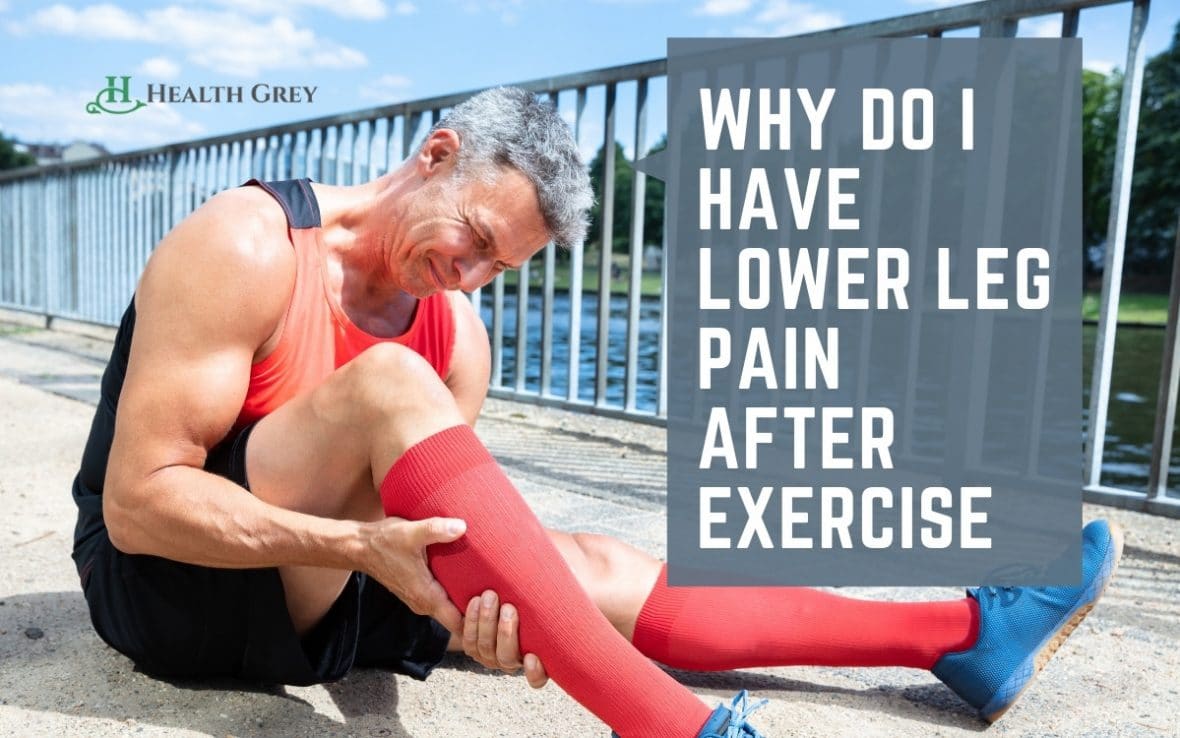When you feel discomfort in the front of your lower leg pain after exercise, you have shin splints. Shin splints cause discomfort by inflaming the muscles, tendons, and bone tissue surrounding your shin. Runners, gymnasts, dancers, and military recruits are all susceptible to shin splints. There are, however, things you can do to repair shin splints and keep them from worsening.
Legs, knees, and even the lower back can be harmed by vigorous activity. People who exercise regularly are more prone to acquire exercise-induced leg discomfort in the future.
Here you can read a Literature Review by Mark F. Reinking, PT, Ph.D., SCS, ATC, on Exercise Related Leg Pain (ERLP).
Causes of lower leg pain after exercise.

Shin splints are a common overuse injury. Shin splints are caused by overworking your leg muscles, tendons, or shin bone.
Shin splints develop because of excessive exercise or increased training. Most of the time, the activity is a high-impact, repeated lower leg pain after exercise. Therefore, shin splints are so common in runners, dancers, and gymnasts. Shin splints are commonly caused by the following activities:
- Running, especially on hills, is a great way to get some exercise. You’re more likely to have shin splints if you’re a beginner runner.
- Increase the amount of days you train each week.
- Increasing the intensity of exercise or increasing the distance traveled.
- Dancing, basketball, or military training are examples of exercises that have many pauses and starts.
Symptoms of lower leg pain.

Following are some symptoms you may see if you have lower leg pain after exercise, which will help you choose the best treatment:
- One or both legs may be affected by leg pain.
- Aching sensation in the front of your shin that might be sharp or dull.
- Pushing on your shins causes pain.
- Physical activity-related pain that intensifies during and after physical activity
- Pain that improves with rest
Prevent lower leg pain when exercising again.
- Before resuming your workout regimen, make sure you are pain-free for at least two weeks.
- Don’t overdo it with your workouts. Don’t go back to your former level of exertion. Slow down for a shorter period. Gradually increase your training.
- Before and after your workout, stretch, and warm up.
- After exercising, ice your shins to reduce swelling.
- Hard surfaces should be avoided.
- Wear shoes with sufficient support and cushioning.
- Consider switching up your training surface.
- Cross-train and include low-impact activities like swimming or biking.
Lower leg discomfort can be treated at home.
There are some simple steps you can take at home to relieve lower leg pain after exercise

- As much as possible, rest.
- Raise your leg.
- For up to 15 minutes, apply ice to the afflicted region. Do this four times each day, with the first few days being more frequent.
- Stretch and massage cramped muscles gently.
- Take acetaminophen or ibuprofen, which are both pain medications available over the counter.
Stress fracture, exertional compartment syndrome, and stress syndrome of the medial tibial are the three most prevalent causes of exercise-induced leg discomfort. Here’s how to cure these diseases and get rid of the discomfort. A person’s bones are subjected to varying degrees of force while they exercise. A bone might be fractured or broken if the impact is strong enough. The oxygen in the lower leg muscles is exhausted when a person overexerts. When this happens, the muscles revert to anaerobic metabolism, which makes use of the muscle’s reserves.




